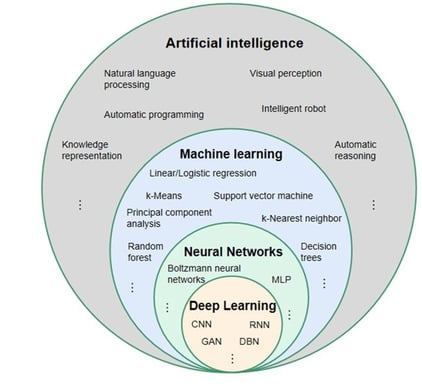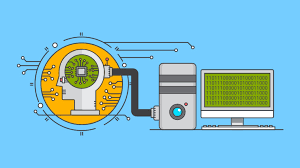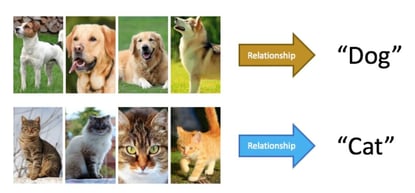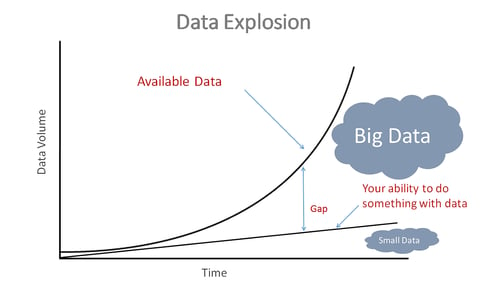The Data Science Dictionary: 12 Terms You Need to Know to Get Started
Feeling overwhelmed by data science jargon? 🤔 You’re not alone! With so many buzzwords flying around, it’s easy to get confused. But don’t worry—I’ve got you covered.
9/13/20244 min read


12 Essential Terms Every Beginner Should Know
Data science is a rapidly evolving field packed with jargon and buzzwords that can seem overwhelming, especially if you're just starting out. Don't worry—you're not alone. Many of these terms overlap or aren't as complex as they sound. Let’s break down some of the most common buzzwords to make things clearer.
1. Deep Learning
Deep learning is a type of machine learning that's been getting a lot of buzz lately.
Think of it as a supercharged version of neural networks. Neural networks have
been around for decades, but deep learning only became popular recently
thanks to advances in computing power and massive datasets. In simple terms,
deep learning uses many layers of neural networks to analyze data, and it’s often used for tasks like image and speech recognition.
Example: If you've ever used a voice assistant like Siri or Google Assistant, deep learning helps it understand and process your voice.
2. Big Data
Big data refers to datasets that are so large they can't be handled by a single computer. These datasets are often complex and require special tools and techniques to process and analyze. Think of it as having a giant pile of data that can't fit into one filing cabinet—so you need a whole warehouse!
Example: Social media platforms handle big data every day as they process millions of posts, likes, and interactions.
3. Machine Learning
Machine learning is a subset of artificial intelligence (AI) that focuses on building systems that can learn from data and improve over time without being explicitly programmed. Imagine teaching a computer to recognize cats in photos by showing it thousands of
images labeled "cat" and "not cat."
Example: Spam filters in your email use machine learning to identify and filter out unwanted emails.
4. Artificial Intelligence (AI)
AI is the broader concept of creating machines or software that can perform tasks that would normally require human intelligence. This includes things like problem-solving, understanding natural language, and recognizing patterns. AI encompasses both machine learning and other techniques.
Example: AI powers self-driving cars, enabling them to navigate roads and make driving decisions.
5. Heuristics
Heuristics are rule-of-thumb strategies used to make quick decisions or solve problems when traditional methods are too slow or impractical. It’s like using a shortcut when you’re in a hurry. In data science, heuristics might be used when a quick approximation is acceptable, rather than a complex algorithm.
Example: When searching for a restaurant in a new city, you might use heuristics like looking for busy places or highly rated spots, instead of analyzing every single option.
6. Neural Networks
Neural networks are a type of machine learning algorithm modeled after the human brain. They consist of layers of nodes (neurons) that process data. Deep learning is essentially a more advanced version of neural networks with many layers, hence the "deep" in deep learning.
Example: Neural networks are used in image recognition systems to identify objects or people in photos.
7. Algorithm
An algorithm is a set of instructions that tells a computer how to perform a task. In data science, algorithms process data to find patterns or make decisions. Think of an algorithm as a recipe: it provides step-by-step instructions to achieve a specific outcome.
Example: A recommendation algorithm on a streaming service suggests movies based on your viewing history.
8. Modeling
Modeling in data science involves creating a statistical representation of data to make predictions or understand patterns. Once you have data, you build a model that can forecast future outcomes based on past information.
Example: A weather model uses historical data to predict tomorrow's weather conditions.
9. Data Mining
Data mining is the process of discovering patterns and insights from large datasets. It involves analyzing data to extract useful information that can help in decision-making. It’s somewhat similar to machine learning but often involves more manual exploration.
Example: Retailers use data mining to find purchasing patterns and trends among their customers.
10. Predictive Analysis
Predictive analysis uses data and statistical algorithms to predict future outcomes. It's like using historical data to forecast what might happen next.
Example: Credit scoring models predict whether an applicant will default on a loan based on their financial history.
11. Cloud Computing / Distributed Computing
Cloud computing involves using remote servers hosted by companies like Amazon or Google to store and process data. Distributed computing is a form of cloud computing where tasks are divided across multiple servers to handle large-scale operations efficiently.
Example: Running complex simulations or training deep learning models on cloud platforms to leverage their computing power.
12. Data Science
Data science is a broad field that combines statistical analysis, machine learning, and data processing to extract insights from data. It’s about using the most powerful tools and techniques to solve problems and make data-driven decisions.
Example: Data scientists analyze customer data to identify trends and help companies make informed decisions.
Understanding these terms can help demystify Data Science and make it easier to grasp what’s going on behind the scenes.
If you're just starting out, remember that these buzzwords are tools and techniques that work together to make sense of data and solve real-world problems.
Keep exploring and experimenting, and soon enough, these terms will become second nature!


Data Mining
Model
Predict






